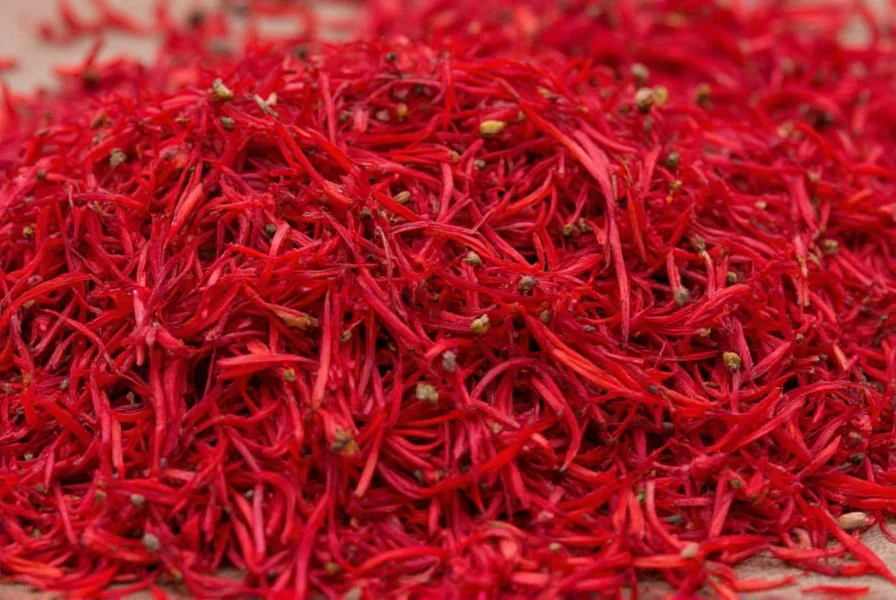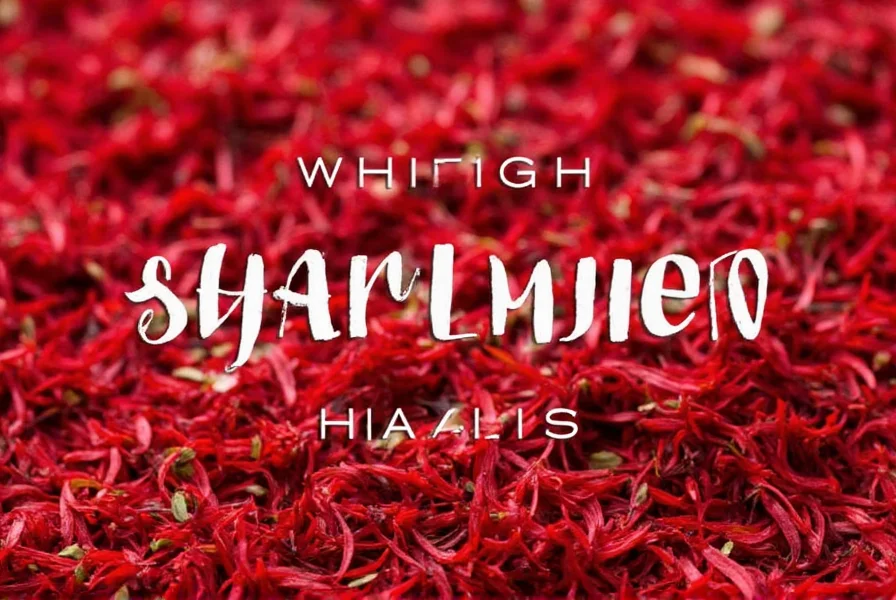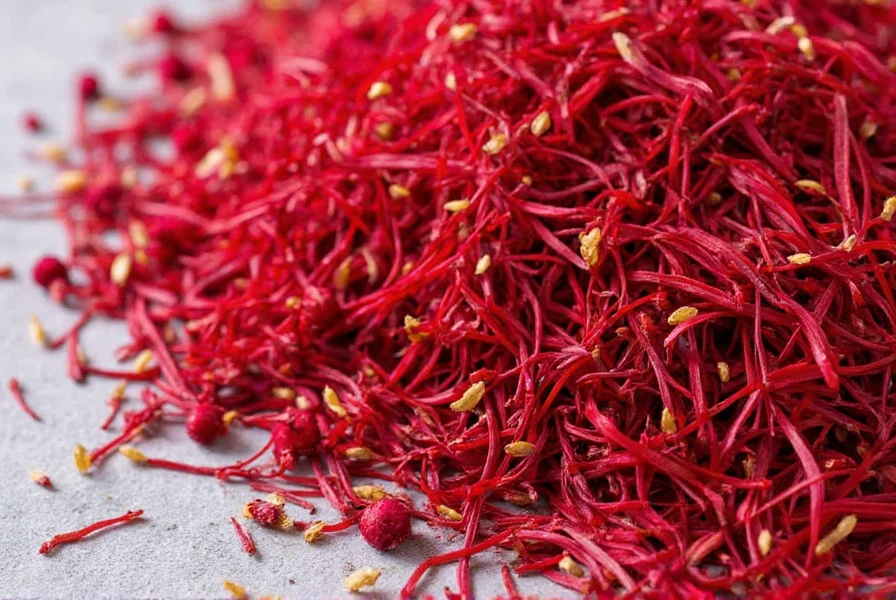Saffron, the world's most expensive spice by weight, has been prized for millennia for its vibrant color, distinctive flavor, and medicinal properties. Understanding where saffron is grown reveals not just agricultural patterns but centuries of cultural tradition and economic significance across multiple continents.
The Global Saffron Belt: Where Saffron Grows Best
The saffron crocus thrives in regions with specific climatic requirements that form what's known as the "saffron belt." This narrow agricultural zone stretches from the Mediterranean through parts of Asia, encompassing countries with continental climates featuring hot, dry summers and cold winters with adequate spring precipitation. Unlike many crops, saffron bulbs actually require summer dormancy in arid conditions followed by autumn flowering when temperatures cool.

Top Saffron Producing Countries
While saffron cultivation occurs in more than 20 countries worldwide, production is heavily concentrated in just a few key regions that have perfected saffron farming techniques over generations.
| Country | Global Production Share | Primary Growing Regions | Notable Characteristics |
|---|---|---|---|
| Iran | ~90% | Khorasan Province | Highest quality with intense color and aroma; traditional hand-harvesting methods |
| Spain | ~5% | La Mancha region | Protected designation of origin; milder flavor profile |
| India | ~3% | Kashmir Valley | Exceptionally high crocin content; grown at high elevations |
| Greece | ~1% | Kozani region | Protected geographical indication; known for strong aroma |
| Morocco | <1% | Taliouine region | Traditional Berber cultivation methods; growing production |
Iran: The Undisputed Saffron Leader
Iran's dominance in saffron production stems from ideal growing conditions in Khorasan province, where the climate perfectly matches saffron's requirements. Iranian saffron, particularly the Sargol and Pushal varieties, is renowned for its exceptional quality, deep red color, and potent aroma. The traditional hand-harvesting method—where each delicate stigma must be plucked individually from the crocus flower—remains largely unchanged despite modern agricultural advances. Understanding where saffron grows in Iran reveals why it commands premium prices globally.
Spain: Europe's Saffron Heartland
Spain's La Mancha region has cultivated saffron since Moorish times, with production methods protected under the Denominación de Origen Protegida (DOP) system. Spanish saffron growers have maintained traditional cultivation techniques while incorporating modern quality control measures. The unique terroir of central Spain produces saffron with a distinctive flavor profile that differs slightly from its Iranian counterpart, making it particularly valued in Spanish cuisine, especially for dishes like paella.
India's Kashmir Valley: High-Altitude Saffron
Kashmiri saffron, grown at elevations between 1,600-1,800 meters above sea level, benefits from the region's unique microclimate. The cold mountain winters and spring snowmelt create ideal saffron growing conditions that produce threads with exceptionally high crocin content—the compound responsible for saffron's color and many health benefits. Kashmiri saffron has received Geographical Indication (GI) tag protection, recognizing its distinctive qualities derived from where saffron is grown in this specific Himalayan region.
Other Notable Saffron Growing Regions
Greece's Kozani region produces some of Europe's finest saffron under strict quality controls, while Morocco's Taliouine has emerged as a significant producer using traditional Berber farming methods. Smaller-scale production occurs in Italy (Abruzzo region), France (Provence), Azerbaijan, Afghanistan, and even limited cultivation in California's Central Valley and parts of New Zealand where growers have successfully replicated saffron's required climate conditions.
Climate and Soil Requirements for Saffron Cultivation
Successful saffron farming depends on specific environmental factors that determine where saffron can be grown commercially. The crocus sativus plant requires:
- Well-drained, calcareous soils with neutral to slightly alkaline pH
- Hot, dry summers (25-35°C) for bulb dormancy
- Cold winters with temperatures below 5°C to trigger flowering
- Moderate spring rainfall (400-600mm annually)
- Full sun exposure with minimal shade
These precise requirements explain why saffron cultivation remains concentrated in specific regions rather than being widespread globally. Attempts to grow saffron outside the traditional saffron belt often require significant climate modification and yield inferior quality.
Historical Context of Saffron Cultivation
Saffron's cultivation history spans over 3,500 years, with evidence of its use in Bronze Age paintings on the Aegean island of Thera (modern Santorini). Ancient Persians first cultivated saffron in what is now Iran around 500 BCE, later introducing it to Spain during the Moorish occupation. The spice became so valuable that it was often worth more than its weight in gold, leading to strict controls over where saffron was grown and traded. Understanding the historical saffron growing regions provides context for today's production patterns and explains why certain areas maintain traditional cultivation methods.
Modern Challenges in Saffron Production
Despite its high value, saffron farming faces significant challenges including climate change impacts, labor shortages for the intensive hand-harvesting process, and competition from lower-quality substitutes. Regions where saffron is traditionally grown are experiencing shifting weather patterns that threaten established cultivation practices. Additionally, the labor-intensive nature of saffron harvesting (requiring approximately 150,000 flowers to produce just 1 kilogram of dried saffron) makes production increasingly difficult as rural populations migrate to urban areas.
How to Identify Authentic Saffron Sources
When seeking genuine saffron, understanding where saffron is grown can help identify authentic products. Look for clear country-of-origin labeling, preferably with specific regional information. Premium saffron will typically indicate whether it's Sargol (Iran), La Mancha (Spain), or Kashmiri (India). Be wary of unusually low prices, as genuine saffron from traditional growing regions commands premium pricing due to the labor-intensive harvesting process. The best saffron sources maintain traceability from field to consumer, allowing buyers to verify exactly where their saffron was grown.

Conclusion: The Geographic Story of Saffron
The question of where saffron is grown reveals much more than simple agricultural facts—it connects us to centuries of cultural tradition, economic significance, and the delicate relationship between a valuable crop and its specific environmental requirements. From the fields of Khorasan to the valleys of Kashmir, saffron cultivation represents a remarkable human achievement in working with nature to produce one of the world's most precious spices. As climate patterns shift and agricultural practices evolve, these traditional saffron growing regions will continue to adapt while preserving the unique qualities that make saffron so highly valued worldwide.
Frequently Asked Questions
Which country produces the most saffron in the world?
Iran is by far the largest saffron producer, accounting for approximately 90% of global production. The Khorasan province in northeastern Iran provides ideal growing conditions for saffron crocus, and Iranian saffron, particularly the Sargol and Pushal varieties, is renowned for its exceptional quality, deep red color, and potent aroma.
Can saffron be grown in the United States?
Yes, saffron can be grown in certain parts of the United States, particularly in California's Central Valley and some regions of Pennsylvania and Vermont. However, commercial production remains limited due to the labor-intensive harvesting process and climate requirements. American saffron production is small-scale compared to traditional growing regions, but several farms have successfully adapted cultivation techniques to local conditions.
Why is saffron so expensive compared to other spices?
Saffron's high price stems from its extremely labor-intensive harvesting process. Each saffron crocus flower produces only three stigmas, which must be hand-picked at dawn when the flowers are still closed. It takes approximately 150,000 flowers to yield just 1 kilogram (2.2 pounds) of dried saffron. This intensive manual labor, combined with specific climate requirements that limit where saffron can be grown commercially, contributes to its status as the world's most expensive spice.
What makes Kashmiri saffron different from other varieties?
Kashmiri saffron, grown in India's Kashmir Valley at elevations of 1,600-1,800 meters, is distinguished by its exceptionally high crocin content (the compound responsible for saffron's color and many health benefits). This high-altitude saffron has a deeper red color, stronger aroma, and more intense flavor compared to many other varieties. Kashmiri saffron has received Geographical Indication (GI) tag protection, recognizing its unique qualities derived from the specific terroir where it's grown.
How does climate change affect saffron production in traditional growing regions?
Climate change poses significant challenges to traditional saffron growing regions. Saffron crocus requires specific temperature patterns—hot, dry summers followed by cold winters with adequate spring rainfall. Rising temperatures, unpredictable precipitation patterns, and extreme weather events are disrupting these delicate conditions. In Iran's Khorasan province, for example, reduced snowfall and changing rainfall patterns have affected saffron yields. Growers in traditional regions are adapting through irrigation improvements and modified planting schedules, but long-term viability remains a concern for where saffron can be sustainably grown.











 浙公网安备
33010002000092号
浙公网安备
33010002000092号 浙B2-20120091-4
浙B2-20120091-4